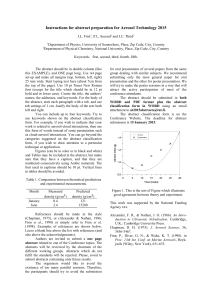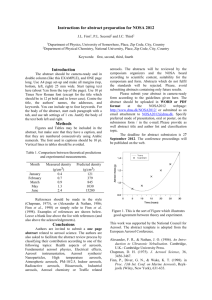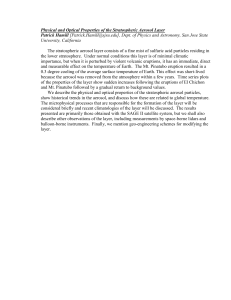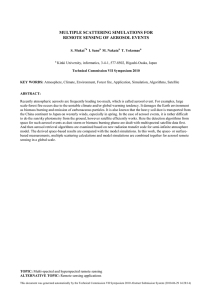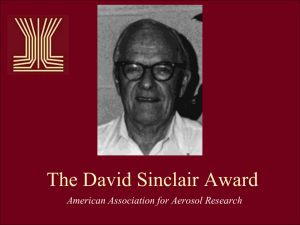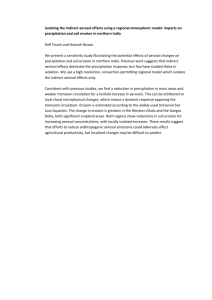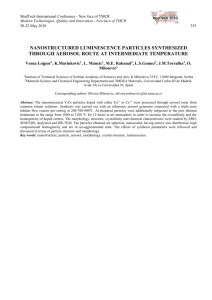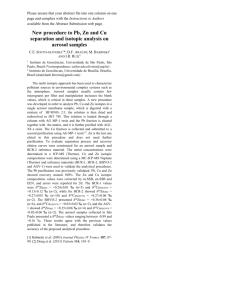Submission of abstract
advertisement
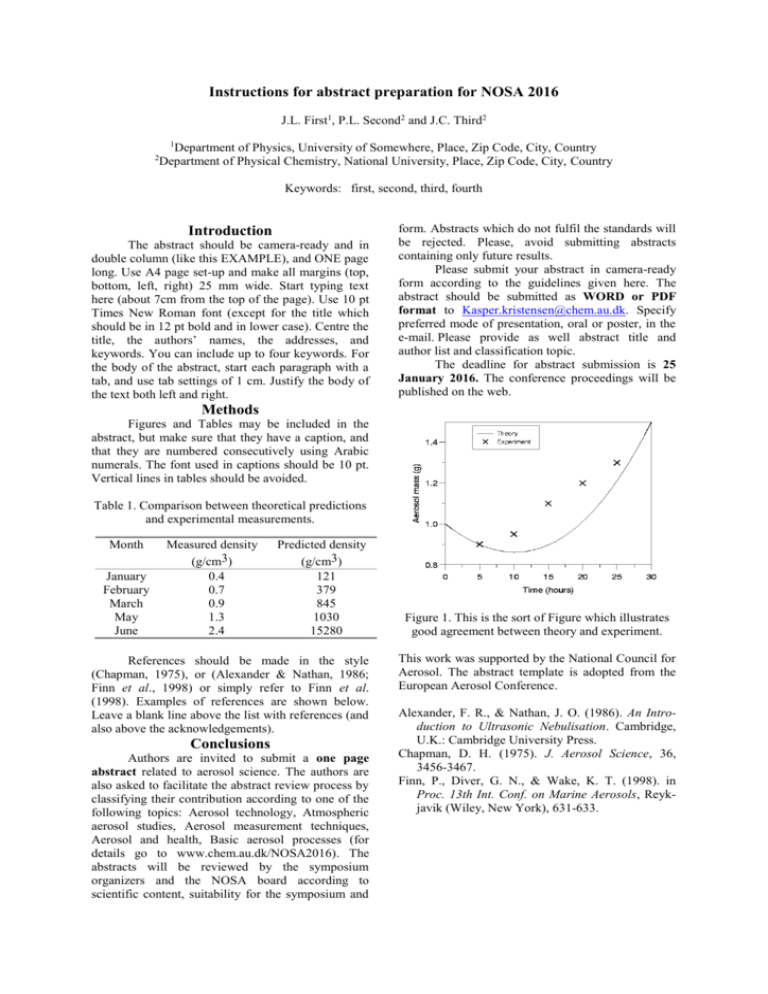
Instructions for abstract preparation for NOSA 2016 J.L. First1, P.L. Second2 and J.C. Third2 1 Department of Physics, University of Somewhere, Place, Zip Code, City, Country Department of Physical Chemistry, National University, Place, Zip Code, City, Country 2 Keywords: first, second, third, fourth Introduction The abstract should be camera-ready and in double column (like this EXAMPLE), and ONE page long. Use A4 page set-up and make all margins (top, bottom, left, right) 25 mm wide. Start typing text here (about 7cm from the top of the page). Use 10 pt Times New Roman font (except for the title which should be in 12 pt bold and in lower case). Centre the title, the authors’ names, the addresses, and keywords. You can include up to four keywords. For the body of the abstract, start each paragraph with a tab, and use tab settings of 1 cm. Justify the body of the text both left and right. form. Abstracts which do not fulfil the standards will be rejected. Please, avoid submitting abstracts containing only future results. Please submit your abstract in camera-ready form according to the guidelines given here. The abstract should be submitted as WORD or PDF format to Kasper.kristensen@chem.au.dk. Specify preferred mode of presentation, oral or poster, in the e-mail. Please provide as well abstract title and author list and classification topic. The deadline for abstract submission is 25 January 2016. The conference proceedings will be published on the web. Methods Figures and Tables may be included in the abstract, but make sure that they have a caption, and that they are numbered consecutively using Arabic numerals. The font used in captions should be 10 pt. Vertical lines in tables should be avoided. Table 1. Comparison between theoretical predictions and experimental measurements. Month January February March May June Measured density (g/cm3) 0.4 0.7 0.9 1.3 2.4 Predicted density (g/cm3) 121 379 845 1030 15280 References should be made in the style (Chapman, 1975), or (Alexander & Nathan, 1986; Finn et al., 1998) or simply refer to Finn et al. (1998). Examples of references are shown below. Leave a blank line above the list with references (and also above the acknowledgements). Conclusions Authors are invited to submit a one page abstract related to aerosol science. The authors are also asked to facilitate the abstract review process by classifying their contribution according to one of the following topics: Aerosol technology, Atmospheric aerosol studies, Aerosol measurement techniques, Aerosol and health, Basic aerosol processes (for details go to www.chem.au.dk/NOSA2016). The abstracts will be reviewed by the symposium organizers and the NOSA board according to scientific content, suitability for the symposium and Figure 1. This is the sort of Figure which illustrates good agreement between theory and experiment. This work was supported by the National Council for Aerosol. The abstract template is adopted from the European Aerosol Conference. Alexander, F. R., & Nathan, J. O. (1986). An Introduction to Ultrasonic Nebulisation. Cambridge, U.K.: Cambridge University Press. Chapman, D. H. (1975). J. Aerosol Science, 36, 3456-3467. Finn, P., Diver, G. N., & Wake, K. T. (1998). in Proc. 13th Int. Conf. on Marine Aerosols, Reykjavik (Wiley, New York), 631-633.
